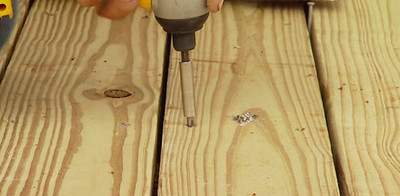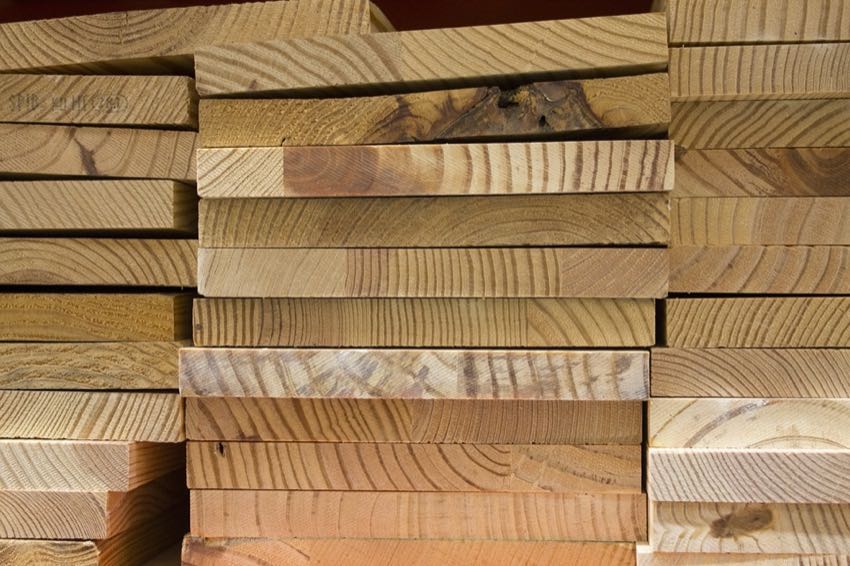You may have noticed one day, while out on a run or an errand, that the neighbor’s wooden mailbox and decks are still in good shape. You suddenly realized that it has been looking good for the past few years and its’ been your familiar view even as a child. It has always been there since you can recall anything. You start to wonder, what would make such wood last long and strong?
Science seems to have the answer. Probably, the wooden mailbox or the wooden bridge in the nearby pond is made from pressure-treated wood. Pressure-treated woods are the best choices if you want the type of woods that can withstand all types of seasons. However, one question remains. How long does pressure-treated wood last?
Pressure Treated Wood
Judging by its name, you can say the wood has been through a lot of pressure. It is true; this is what makes this wood resilient to any decay and rot. The process gets done by coating and getting chemical preservatives into the insides of the wood. It starts by having the wood inside a tank. Air gets removed while the chemical is poured all over the wood. Under very high pressure, the chemical seeps in deeply into the very core of the wood. Once done, the tank drains all the chemical substances and lets the wood out. Finally, it goes to a lumber shop, where you get to order one for your patio or outdoor deck.
How Long Does Pressure Treated Wood Last?
Now, for the essential question. How long does a pressure-treated wood last? It can generally last a lifetime, given the right proper care is done. However, when left with nothing but rain and dirt, untreated pressure wood can last as long as ten years and may reach up to thirty years before it starts to rot. It is why, even when they are of the best quality of wood, they still need extra care and attention. If you give them the best treatment, this pressure-treated wood can last for many generations.
Causes of Rotting Pressure Treated Wood

There are multiple reasons why pressure-treated wood begins to rot. You can make these mistakes even at the start of your project. That’s why it is essential to know the causes before you dive into building your outdoor wood project.
The initial action to do is make sure the wood is properly dry. The moisture left on the wood can let it rot in time. Inspect for splits on wood. It’s easier for moisture to leak in under cracks while they stay unprotected. However, dampness can furthermore cause the wood to crack.
If you failed to check for any moisture and proceeded to paint or seal your pressure-treated wood while they aren’t dry, this may cause moisture to get trapped inside the wood. The chemicals seeping into the wood may react with the chemicals from paint or stain. Thus, make sure to wait for your pressure-treated wood to dry before doing anything to it.
Dirt can likewise accelerate the rotting process of your pressure-treated wood. It is why it’s crucial to have it clean and dry throughout the steps, from construction to maintenance.
So, before purchasing your pressure-treated wood, make sure you get the correct lumber. Since there are many options available, take advice from an expert on what to choose. There is pressure-treated wood that works when in contact with the ground. There are other different pressure-treated wood categories based on the twelve levels of pressure chemical treatment. Since the wood is tagged, it’s easier to know their grade level.
There are a couple of types of grades for pressure-treated wood. The number 1 grade is physically pleasant, with some to none detectable flaws, and has an unspoiled cut. The second grade has more prominent knots. Another matter to recognize is, when you purchase a still-wet pressure-treated wood, once dried, it may reduce its size and shrink. It can cause alterations in its form as well.
Protect Pressure Treated Wood
The protection of your pressure-treated wood starts right before construction and after purchasing them. The chemicals from the pressure treatment make it harder for the wood to rot. However, other problems, such as weathering, can still harm it. So, a good coat of wood preservatives is the most important thing to do as soon as you finish your project construction.
Like other ordinary wood, pressure-treated wood reacts with the weather. It will get wet from the rain and will dry out when it’s too hot. It can cause damages to the pressure-treated wood. Yet, the preservative helps soften the harsh blow. A coat of wood stain or paint is a vital recommendation for proper maintenance of the pressure-treated wood. Before applying, you have to make sure the wood is dry and clean.
Conclusion
Now, you have an idea of how long does pressure-treated wood last. You will feel motivated to take care of your pressure-treated wood. You wouldn’t want to waste money and effort. Besides, the wood looks fresh and pleasant. It adds character to your house or project. That’s why giving it the best care and maintenance is the first step to getting it to last longer than a lifetime.
Your investment in pressure-treated wood is worth it. Having a wooden deck, outside tables, and a swing set in your backyard are some of the exciting projects you can work on to make your house look great. Pressure-treated wood may need a bit of maintenance, but having it last fifty years or more makes it worth every paint and preservatives.
